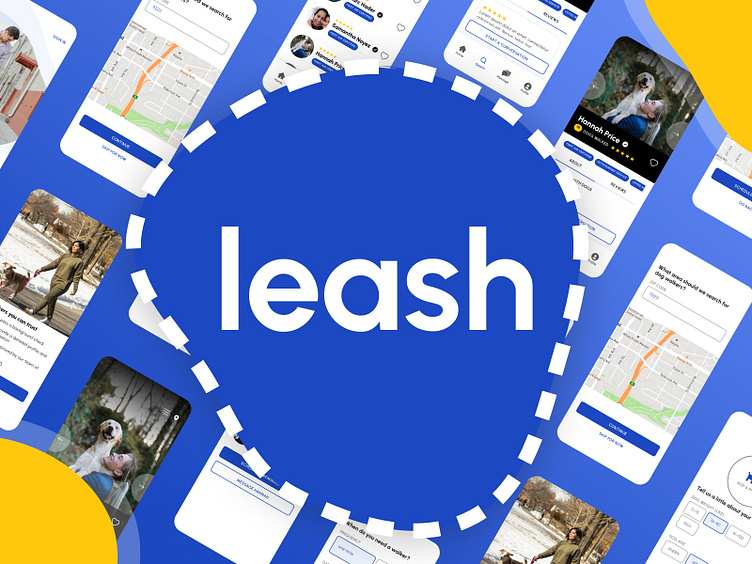Helping dog owners find the right walkers with Leash
Understanding the problem
Leash is a mobile application allowing dog owners in metropolitan areas to find walkers that work within their busy schedules. Currently, the majority of this audience utilizes friends and family or dog kennels/hotels as they feel uncomfortable entrusting their dog to a stranger they haven't established a relationship with. However, many users that were interviewed want their dog to be happy and healthy so they would be open to the possibility of someone else walking their dog if they were trustworthy and were able to get in touch easily.
How could we help dog owners find the right walkers?
The challenge Leash needed to overcome was establishing trust with dog owners while making it easy to find walkers that fit within their schedules.
Understanding dog owners' underlying fears
During the research and interview portion of this project, I quickly discovered that dog owners are very apprehensive about allowing a stranger to walk their dog. Statements such as "how do I know they won't rob me when I'm at work?" and "how do I know that they are competent enough to care for my dog if they are injured or sick?" were frequently expressed in interviews.
Looking into similar services like Rover, Wag, and Fetch, social proof and trust indicators were clearly and repetitively displayed throughout the onboarding and finding a dog walker processes. This validated what we were hearing from the dog owners I interviewed and the need for similar elements to be prioritized in Leash.
Synthesizing our research into personas and user flows
From the research and interviews conducted, I created two personas: the first persona was an individual in their late 20's early 30's that owns a dog but lives in an apartment, and the second persona was an individual in their 40's early 50's that owns a dog and lives in a house. The primary distinction between the two personas was the difference in fear that a stranger would commit burglary and/or property damage, the persona living in the apartment expressed less of this fear than the one who owned a house.
Prototyping and testing
After designing higher fidelity screens for each user flow and initially testing those screens, I found out that the users I was testing needed additional screens for trust elements such as the "Reviews" tab on the dog walker profile page. Test users also expressed the need for having a messaging feature so dog owners could get in contact with the dog walker before booking so they could get to know them better and see if they were the right match.
Onboarding Screens
Dog Walker Search Screens
The other challenge that came up in testing was making sure that there wasn't too much information displayed on the dog walker list but making sure that key trust elements like the rating stars and chips displayed specific competencies dog walkers had.
Looking toward the future
After testing and the additional iterations, users felt like there were enough trust elements in Leash that would make them feel more comfortable with enlisting the help of a stranger to walk their dog.
Challenges to still be addressed:
There were quite a few users who expressed the need for clearer pricing indicators so they knew how much a walk was going to be.
Could Leash expand its services from just dog walking to dog training or dog sitting?









